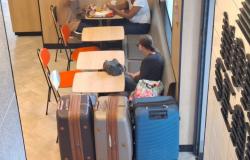Food on the table, plants at home, trees in the streets. Many people don’t know, but a considerable part of what feeds us, purifies our air and beautifies environments is the result of work carried out on land located in the city of Rio de Janeiro, in the state capital. Literally, here you plant and here you harvest.
According to the most recent data released by Technical Assistance and Rural Extension Company (Emater-Rio), there are around 1,500 farmers – registered with the Ministry of Agriculture –, who are dedicated to the trade of rural products, working in the municipality of Rio.
It is worth mentioning that in addition to these registered land workers, there are a multitude of families in urban and peri-urban regions increasingly dedicating themselves to producing food for their own survival, in community and collective gardens, and even in their own backyards.
“What I harvest here is for my family and to be sold at fairs around the city. I plant lettuce, eggplant, chives. Everything here in my homeland”, said Guilherme de Souzawho lives in the neighborhood of Vargem Grande, West Zone of the city of Rio.
The same Emater report shows that the majority of these urban farmers (975) in Rio focus on the so-called Planning Area (AP) 5 , which comprises locations in the regions of Bangu, Realengo, Campo Grande, Santa Cruz and Guaratiba; in AP4 (380), between the territories of Jacarepaguá, Cidade de Deus and Barra da Tijuca; in AP3 (115), between Inhaúma, Madureira, Penha, Vigário Geral, Anchieta, Pavuna, Irajá, Méier, Ramos and Ilha do Governador; and AP2 (35), between Tijuca, Vila Isabel and Rocinha, in São Conrado.
Emater also highlights that organic and agroecological agriculture has registered an increase of around 15% to 25% per year in Rio de Janeiro. According to experts from different areas, organic foods are extremely important for a balanced diet. Because they are not grown with chemical components, such as pesticides, antibiotics and fertilizers, they do not offer any residue of these compounds to our body, being safer for our health.
An example that contributes to the growth of organic agriculture in the city of Rio is in Jacarepaguá, in the former Juliano Moreira Colony. At the site, where for many years there was a pavilion of the former psychiatric hospital, today there is work focused on urban agriculture. The project Art Horta e Cia, which has existed since 2007, serves people undergoing mental health treatment and other members of the region’s community. The idea is to produce food in an area of around 2 hectares of land.
Photo: Felipe Lucena
These foods are used in the preparation of food at the bistro located in the complex. Bispo do Rosário Museumwhich also includes facilities for the Rio City Hallin addition to being close to the Fiocruz Atlantic Forestwhich is situated in an area of approximately 500 hectares, located in Pedra Branca Massif. Part of what is produced by Arte Horta e Cia is also sold among residents of the area, generating circulation of local income.
In the midst of this initiative, since 2022 there has been a agroecology course in the region, whose focus is the management of agroecosystems based on sustainable techniques and principles and strengthening communication between female and urban farmers.
“There are two classes per year, one per semester. The profile of students is very varied. Students from many areas, people who have already been treated in the psychiatric hospital that operated here, people who work in agriculture. It is very common for people here in the region, who take the course, to say that they are very happy, because when they were younger they had contact with the land, they planted, and now they are returning to this experience.“, highlights Marcelle Souzacoordinator of the Arte Horta e Cia project.
The project and the course are in full connection with other initiatives, such as the Carioca vegetable gardens and the Rio de Janeiro Urban Agriculture Network. The idea is to expand the actions and make the entire initiative sustainable, since the place in question – from the indigenous people – through the sugarcane cycle, has always had a vocation and fertile soil for agriculture. In the 1990s, when the former psychiatric hospital complex was municipalized, activities aimed at agroecology were already carried out there.
Carioca vegetable gardens
Spread across almost 25 hectares of land across the city of Rio de Janeiro, the Carioca vegetable gardens are responsible for producing around 70 tons of organic food per year. There are almost 3,800 beds where spinach, chicory, parsley, eggplant, arugula, lettuce, chives, kale, among other foods and plants, are planted.
The program encourages environmental education among students, promotes training in agroecology and food security and disseminates technologies for urban agriculture. The objective is to increase access for the most vulnerable population to healthy and organic food, promote income generation for poorer people and occupy empty areas subject to misuse.

Photo: Marco Antonio Rezende / Rio City Hall
Currently, around 300 people work directly in the gardens, which are distributed across the West (26), North (22), South (5) and Center (3) zones. In total, there are 56 units. Of these, 29 gardens in communities and 27 in the Municipal Education Network. Professionals receive R$1,000, R$630 or R$500, depending on the role performed, through grants provided by the Rio City Hall. The initiative is the responsibility of City Environment Secretariat (SMAC).
“Hortas Cariocas is a program that combines food security with income generation for people in vulnerable situations. The most important thing about this project is being able to bring quality food to these people’s tables and the Program also becomes a source of income for families”, stated Taina de Paulamunicipal secretary of Environment and Climate.
Half of Hortas Cariocas’ production is donated to nursing homes, shelters, orphanages, daycare centers and families in more vulnerable situations, identified by residents’ associations. The other half is sold by those who participate in production.
More trees to contain the damage from the climate crisis
Both to reduce extreme heat and to help contain the damage that occurs during heavy rains, the planting of trees is a consensus among experts on the subject to minimize the consequences of the climate crisis. Although it is not the only solution, it is worth highlighting.

Southeast Regional Director of Brazilian Society of Urban Afforestation, Flávio Telles points out that it is necessary to promote planting in parking areas of supermarkets, shopping malls and companies; preserve existing green areas; increase the number of trees in squares and parks; conserve large trees, as they bring the most environmental benefits; increase the number of street plantings where this is possible; engage the population in planting and maintaining the City’s trees; increase the number of green areas in the city through green corridors, renaturalization of rivers and maintenance and construction of new parks; implement and allow owners to maintain green areas on their lots by reducing IPTU and implement municipal RPPN and avoid management that distorts trees by aerial networks.
“Ideally, in the near future we would have something like an honorary professor of urban forestry at the University of British Columbia Cecil, Van der Konijnendijk. He proposes in his articles that we need to have 3 – 30 – 300. The idea is that, when looking from home, you see 3 trees, that the neighborhoods have 30% green area and there is a green area 300m from your house. And I would say that if there is no union between the Public Power, society and entities, we will not change the current situation in our municipality”, said Telles.
There is still a lot to plant
In addition to farming healthier foods and planting trees to combat the consequences of the climate crisis that is already causing deaths and property damage in Rio de Janeiro, another type of urban farming is also gaining relevance, even if not as prominent.
Vice President of ANNAMA (National Association of Municipal Environmental Bodies), an entity whose main objective is to strengthen municipalities to implement environmental policies that preserve natural resources and improve the quality of life of citizens, Antonio Marcos Barreto believes that there is a lack of public incentives for certain initiatives, such as one taking place in Guaratiba, in the West Zone of the city.
“There, there is a real center for planting and selling orchids that is growing a lot. Everything happens without great support from public authorities. If cases like this had more help, it would certainly be better for everyone. It would generate income and employment. Not to mention the obvious environmental gains that this type of work generates,” points out Antonio Marcos.
The journalist specializing in the environment, Emanuel Alencar also believes that the city of Rio de Janeiro can do more in favor of urban agriculture: “Rio has approximately 7% of its territory dedicated to agriculture, and this has historical roots. We cannot simply consider all areas as urban, penalizing these producers. The Santa Cruz region, with the production of okra and cassava, is a powerhouse. But the city’s expansion model has been destroying these dynamics. It’s nonsense in times of food inflation and the need to put cheap, quality food on people’s tables. Interestingly, the new Master Plan mentions ‘agroecology’, but in practice this fight for the recognition of rural areas continues. This needs to be a societal issue, putting pressure on public managers.”
Warning

Tags: plant harvest urban agriculture importance health population tackling climate crisis
--








